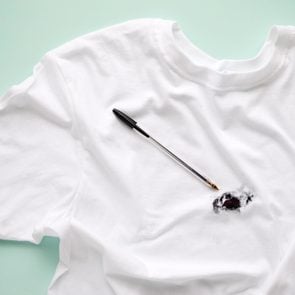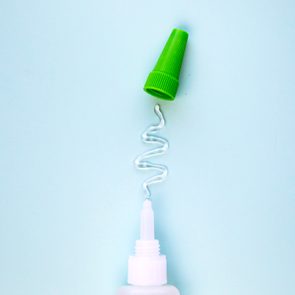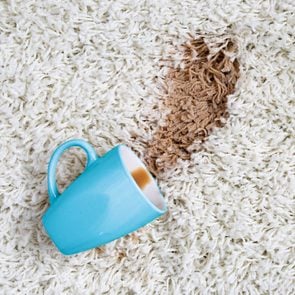How to Remove Blood Stains
Updated: Apr. 08, 2024
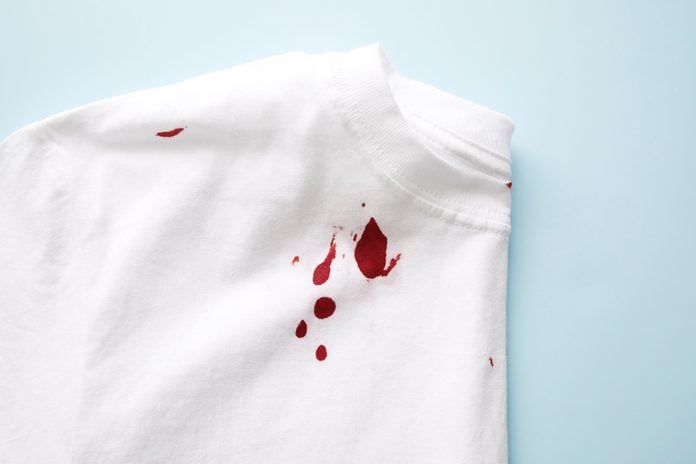
The key to success? Acting fast! That’s why you’ll want to memorize this information on how to get blood out of jeans, shirts, sheets, mattresses, and more.
Blood stains are a nightmare. First, you have to deal with the bloody nose, skinned knee, or whatever else caused the problem, and when you finish, your reward is an unsightly stain. Not sure how to remove blood stains from clothes, sheets, mattresses, carpet, and more? You’re in the right place! While each item will require slightly different techniques, you can use common household products on all of them to combat even the most stubborn blood stains. That’s right—pantry items like vinegar, cornstarch, and salt are just a few of the things you already have in your home that have secret stain-removing superpowers. Read on to find out how to remove blood stains from any fabric with them quickly and easily. And when you’re up to speed, find out how to get rid of red wine out of clothes, too—another dark red stain that’s equally frustrating. Knowing how to remove stains like this is essential and can save you time, money, and headaches.
How to get blood stains out
The first step? Don’t panic! Whether you’re dealing with fresh blood or dried blood, you have options. But you’ll want to keep a few things in mind so you have the best chances of actually getting that stain out of whatever fabric it’s soaked into. Before you get started, memorize these tips.
- Don’t delay. It’s easier to remove fresh blood stains than dried blood stains, so act as quickly as possible. The same is true when you need to remove a mustard stain and nearly every other type of stain.
- Avoid using warm or hot water. The heat will set the stain, so always use cold water when dealing with blood.
- Always follow the manufacturer’s guidelines. For instance, if you’re dealing with blood stains on a blouse that says dry clean only, don’t throw it in the washing machine. Take it to the dry cleaner or use an at-home dry cleaning kit like Dryel.
How to remove blood stains with household items
So, which items are the most effective in your battle against blood stains? All of the ones below can work some serious magic—it really depends what you have on hand and what your preference is. (For example, if you’d rather not use ammonia, opt for a more natural solution like vinegar or salt.) Bonus: Since you likely already have at least one of them in your home, you won’t have to spend a bundle on pricey solutions and you can put them to work immediately. Just make sure to follow the specific directions for each solution listed below.
Blood stains and vinegar
If you think vinegar is just for salad dressing, think again. Vinegar has surprising household uses you never knew about, including removing blood stains from shirts, jeans, sheets, and mattresses. To get started, cover the affected area with vinegar, and allow it to soak for 10 to 15 minutes. Next, blot the area with a towel, repeating until the stain is gone. If you’re dealing with a mattress or a couch, blot or rinse the area with cold water to get rid of the vinegar odor. If the blood stain is on a towel, sheet, or article of clothing, throw the item in the washing machine on the cold cycle instead.
Blood stains and ammonia
Don’t apply ammonia directly to the fabric you are trying to clean. Instead, apply just a few drops onto a wet sponge or cloth (moistened with cold water). Then, use the sponge or cloth to blot the area, switching to a clean spot each time you blot. Repeat until the stain is gone. Then blot or rinse the area with cold water to eliminate the harsh ammonia smell. If the item you’re cleaning is machine washable, follow up with a spin on the cold cycle.
Warning: Ammonia has a very powerful scent, so you should open a window or turn on a fan when using it. It also creates potentially deadly gasses called chloramines when combined with bleach, so never mix those chemicals.
Blood stains and hydrogen peroxide
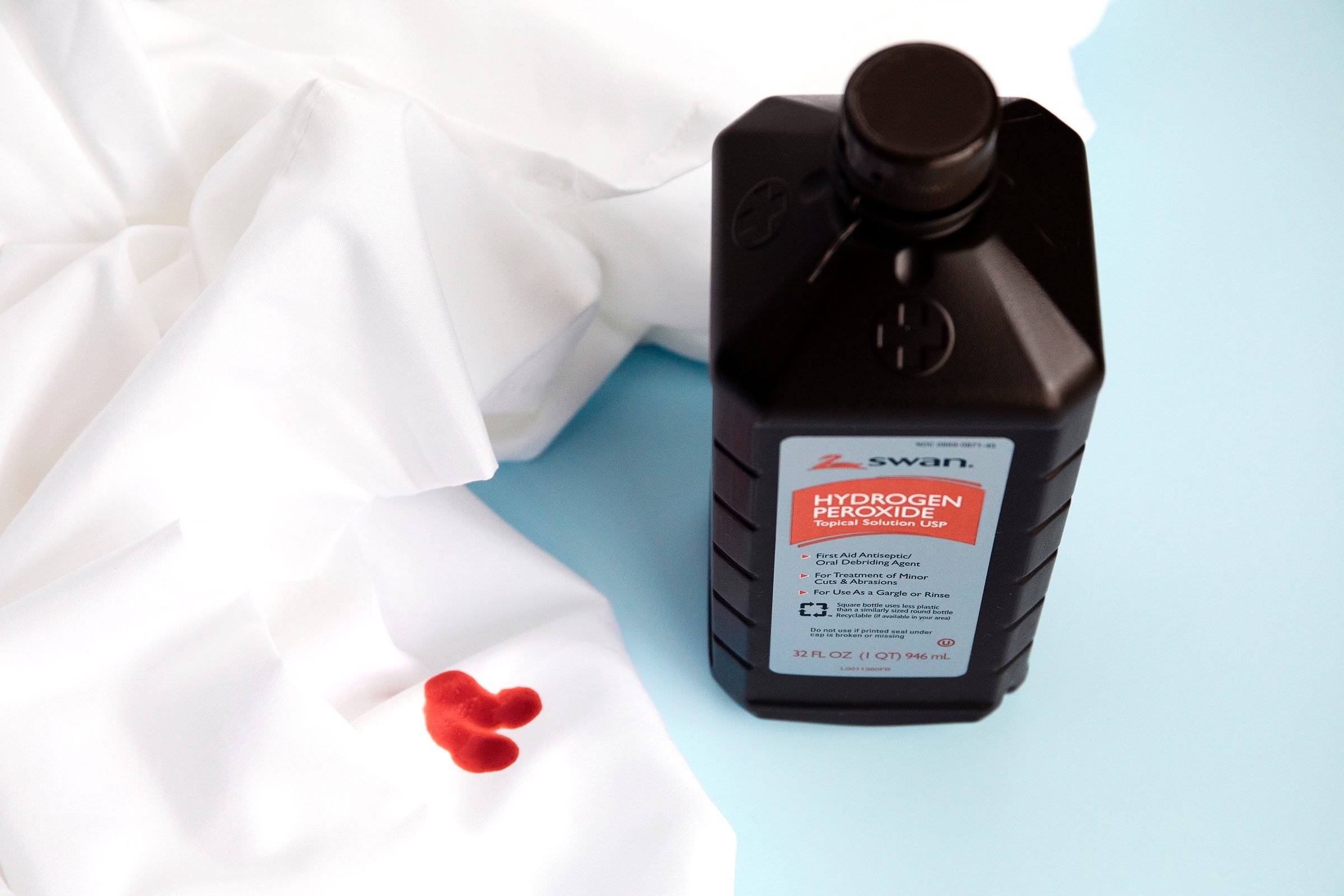
Hydrogen peroxide is actually a mild bleach, which is why it comes in handy when you need to remove a blood stain (or when you need to remove a sweat stain). But it’s better than straight-up bleach because it’s usually color-safe. Still, you should always make sure it won’t discolor the fabric in question by placing a small dot on a hidden area. Once you’ve determined hydrogen peroxide can be used without ruining your fabric, apply it directly onto the stain, using just enough to cover it. Then, use a towel to blot the area. Hydrogen peroxide works quickly, bubbling and sizzling slightly over the blood, so the stain should start to dissipate immediately. For especially stubborn stains, repeat the process as necessary. This is just one of the many incredible hydrogen peroxide uses that come in handy.
Blood stains and cola
Accidents don’t only happen at home, of course. If you’re out and about when you get blood on your clothing, grab the nearest can of cola. It’s not only refreshing and delish but it the carbonic acid inside this bubbly drink can also help dissolve blood stains! The show Mythbusters even performed an experiment to prove it. Unfortunately, the testers found that while cola did help remove blood stains somewhat, it wasn’t 100 percent effective. Therefore, cola is best used as a pre-treatment until you get home and can use one of the other household products recommended in this article—ideally within 24 hours.
Blood stains and WD-40
If you need to get blood stains out of clothing and you’ve got a can of WD-40 in the garage, you’re in luck. Although it’s a lubricant normally used for household projects like loosening rusty bolts or lubricating power tools, a little bit of WD-40 will help you remove blood from fabric, too. Just note that this treatment is most effective when the blood stain is fresh. Simply spray enough WD-40 on the area to cover the blood stain, let it sit for 5 minutes, and then throw the item in the washing machine with detergent and launder it as usual. WD-40 is also an excellent choice if you need to remove oil stains from clothing.
Blood stains and cornstarch
Mix cornstarch with enough cold water to form a thick paste. Then, spread the paste over the entirety of the stain and let the paste dry. If you’re dealing with clothing, as opposed to a mattress, you can speed up this process by placing the item near a window or somewhere sunny and warm. Once the paste has dried, brush it off. If the stain remains, repeat as necessary. Afterward, blot the spot with water or, if possible, launder the item in the washing machine to make sure all the cornstarch residue has been removed.
Blood stains and talcum powder
To remove blood stains with talcum powder, follow the same steps as you would for cornstarch. Both products work equally well, so can use whichever one you happen to have on hand. You’ll mix it with cold water, form a paste, let it dry, and then brush it off. Afterward, blot the area or place the item in the washing machine. Voilà—good as new!
Blood stains and cold saltwater
This is just one of the many clever uses for salt that don’t involve cooking, and if you want to use it for removing blood stains, you should do so when the blood is still damp and fresh. If that’s what you’re dealing with, rinse the fabric with cold water. If you’re removing the blood stain from a mattress, you can blot it with cold water instead. Next, combine the salt with cold water to form a paste. Spread the paste until the stain is covered, and leave it on for approximately 20 minutes. Salt has a strong ability to absorb moisture, so it will soak up the blood. Brush off the paste and repeat if the blood is still visible. Afterward, blot with cold water or machine-wash on a cold cycle to get rid of the excess salt.
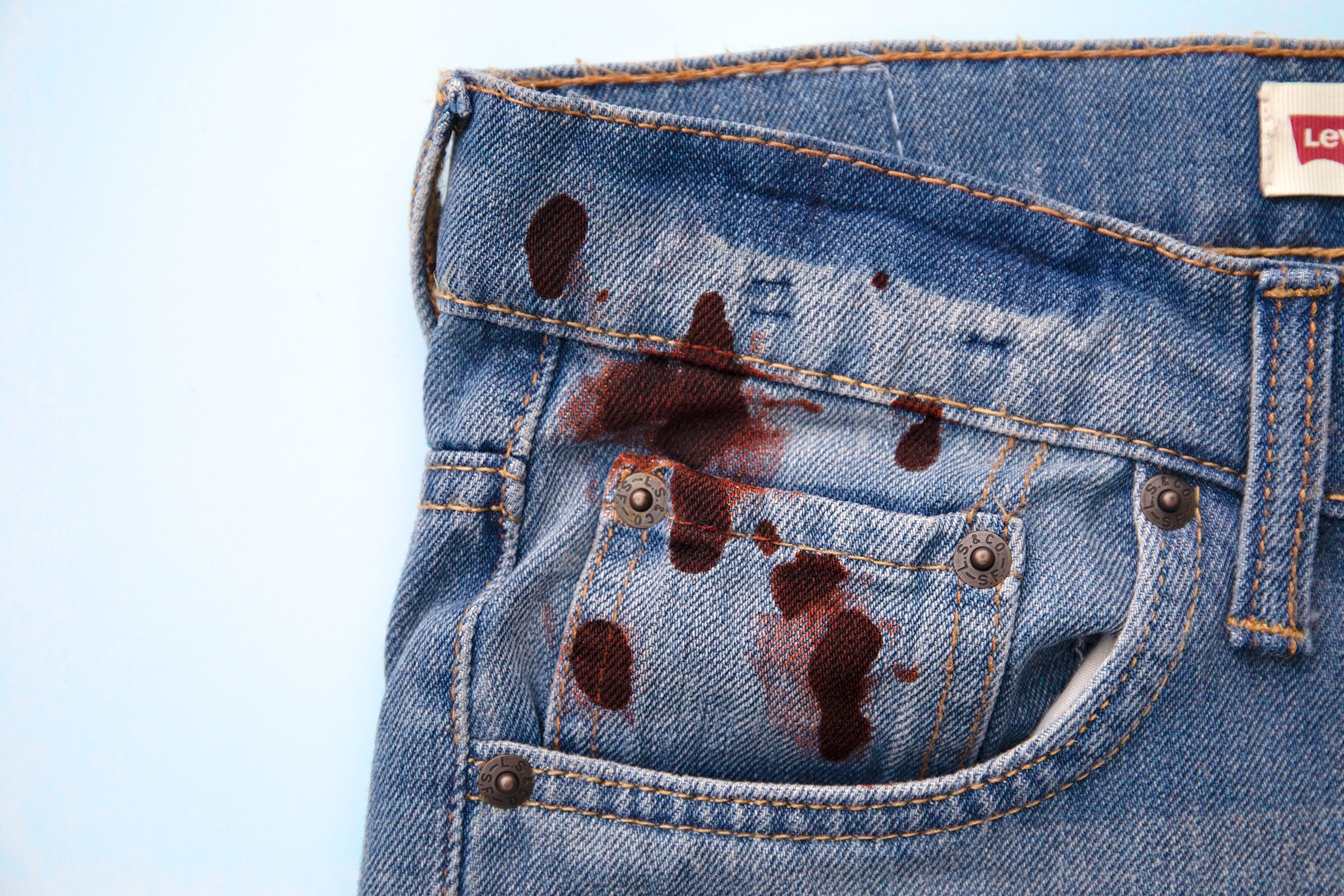 How to remove dried blood stains
How to remove dried blood stains
As we’ve already mentioned, it’s easiest to remove a blood stain if you take care of it early, before it has a chance to set. However, life happens, and sometimes that might not be possible. To tackle dried blood stains, you’ll probably need a little muscle power in addition to a heavy-duty laundry detergent, like Biz, which has a powerful stain and odor remover.
For this process, fill a sink with cold water and add a teaspoon of laundry detergent or stain remover for every quart of water. If you have a product on hand that breaks down enzymes, this will work best. Let it soak for approximately 4 hours. Then, shake the excess water from the fabric, and apply more detergent to the surface of the stain if it is still available. Rub the stain, or use a brush to scrub it. Wash as normal in the washing machine with color-safe bleach. If the stain is still there, repeat the process, adding a teaspoon of ammonia to the sink while the fabric is soaking, or use a laundry stain scrubber like Carbona Pro Care.
Now that you know how to remove blood from just about everything, it’s time to tackle other tricky issues: Here’s how to remove gum and coffee stains from your clothing, carpet, and more.
Sources:
- Molly Maid: “Emergency Treatment for Blood Stains”
- HousecleaningCentral.com: “Proven Ways to Remove Blood Stains”
- Today: “The 1 ingredient you need to get rid of a blood stain”
- Maids by Trade: “How to Remove Blood Stains”

